Special Report
30 Largest Worker Strikes in American History
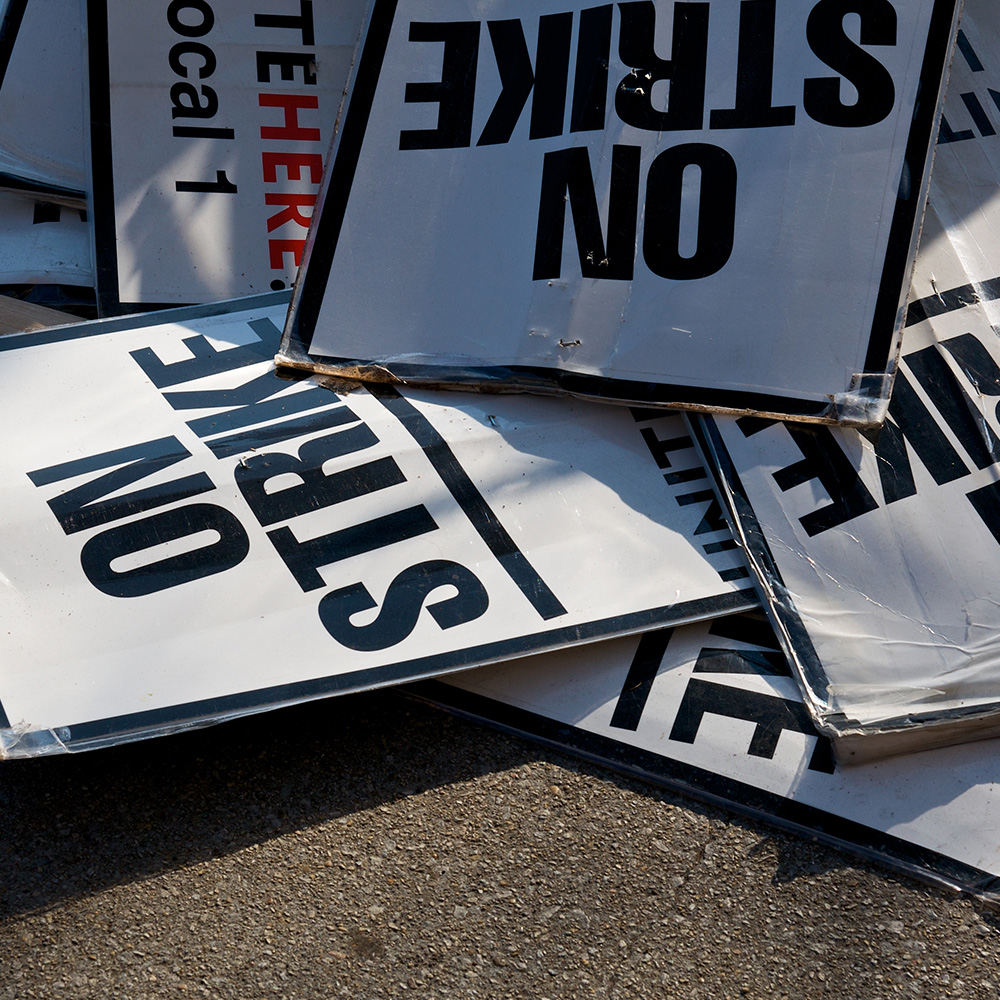
Published:
Last Updated:

Emboldened by a strike that began in West Virginia earlier this year, four more statewide teachers’ unions — in Oklahoma, Kentucky, Colorado, and Arizona — have now left work, demanding a fair paycheck.
While this might give proponents of organized labor hope, the reality is the unions of today face a bleak landscape. Membership rates have been steadily eroding for decades, making strikes — one of the most powerful ways for organized labor to fight for higher wages — considerably less effective. It will be later this year when the U.S. Supreme Court makes its decision in the case of Janus v. AFSCME, which centers on whether unions have the right to collect fees from non-union members to perform collective bargaining. The decision is widely expected to result in a major blow to public sector unions.
There were seven labor strikes of 1,000 workers or more last year, the second-fewest in U.S. history. The only time there were fewer strikes was in 2009, during the depths of the recession, when there were just five strikes.
The International Brotherhood of Electrical Workers’ strike against Charter Communications, which at the time of this writing is ongoing, was by far the biggest strike launched last year — and it appears it will likely be the biggest this year as well. The strike, taking place in New York and New Jersey, has amounted to 345,600 cumulative idle days involving 1,800 workers. The IBEW strike against Charter accounted for nearly 80% of all the days workers were on strike in 2017.
By contrast, there were 470 major strikes in 1952, the most on record. Strikes that year resulted in 48.8 million days of idle worker time. Steel union strikes accounted for most of the strike activity that year and were immensely powerful at that time, when the United States was producing materials for its involvement in the Korean War.
In light of International Workers’ Day, 24/7 Wall St. identified the largest worker strikes ever held in the United States. The size of strikes is measured according to the Labor Department’s convention of cumulative number of idle days (the number of workers on involved multiplied by the duration of the strike). Data was obtained from internet sources such as labor history blogs as well as from the Bureau of Labor Statistics, which archived annual analysis reports from 1936 through 1992 and has tracked this measure of strike size from 1993 through 2017. The duration of strikes exclude weekend days and holidays.
Click here to see the 30 largest worker strikes in American history.
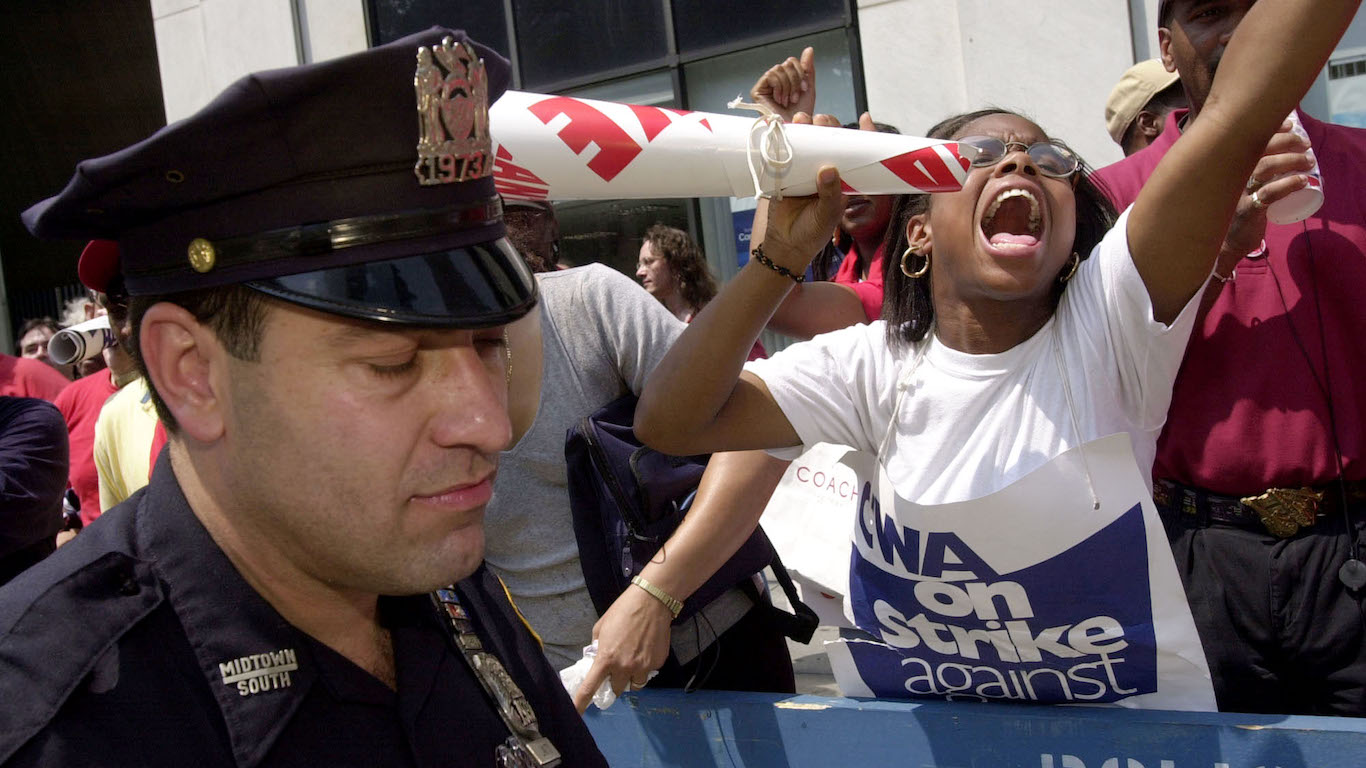
30. Communications Workers of America strike against Bell Atlantic
> Duration: Aug. 9, 1998 to Aug. 12, 1998 (3 days)
> No. of strikers: 73,000
> Cumulative days of work: 219,000
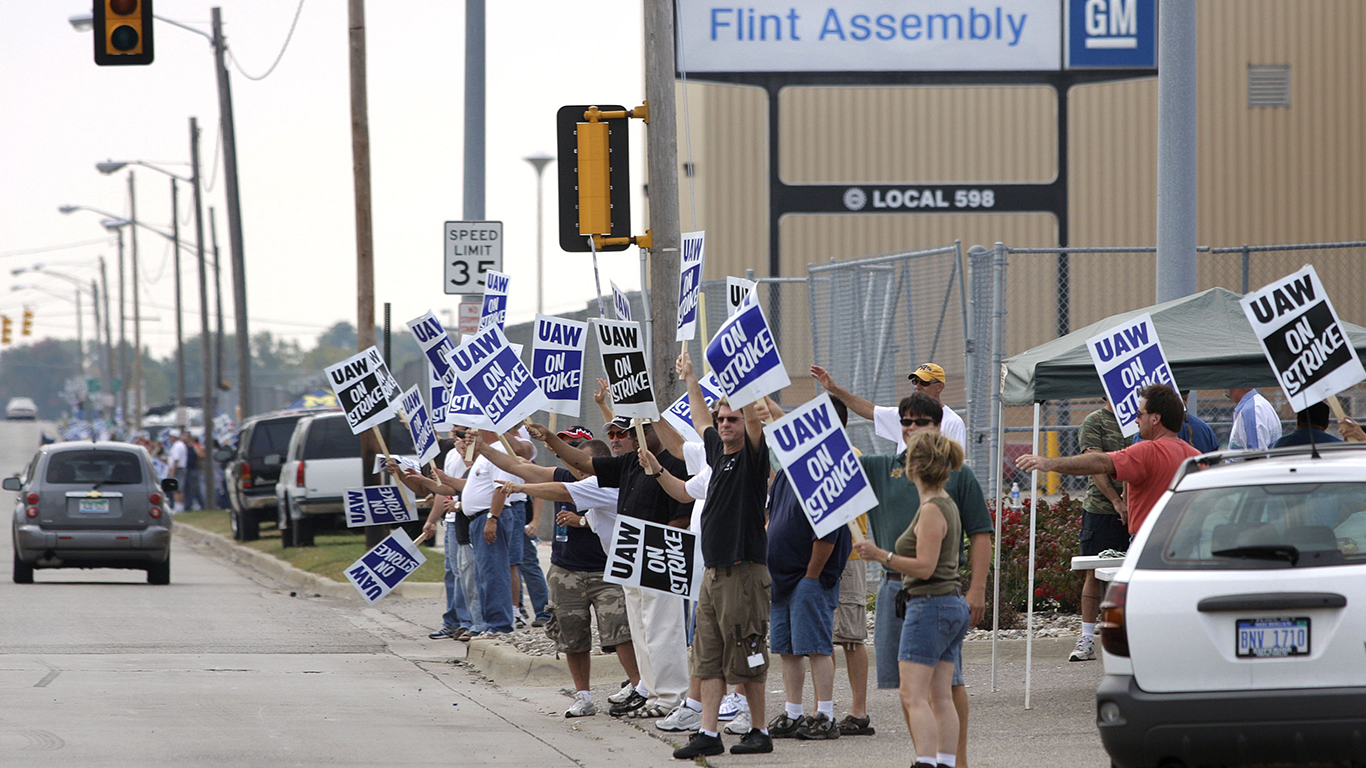
29. 2007 General Motors Strike
> Duration: Sep. 24, 2007 to Sep. 26, 2007 (3 days)
> No. of strikers: 74,000
> Cumulative days of work: 222,000
[in-text-ad]

28. Northwest Airlines Strike of 1998
> Duration: Aug. 29, 1998 to Sep. 10, 1998 (8 days)
> No. of strikers: 33,700
> Cumulative days of work: 269,600
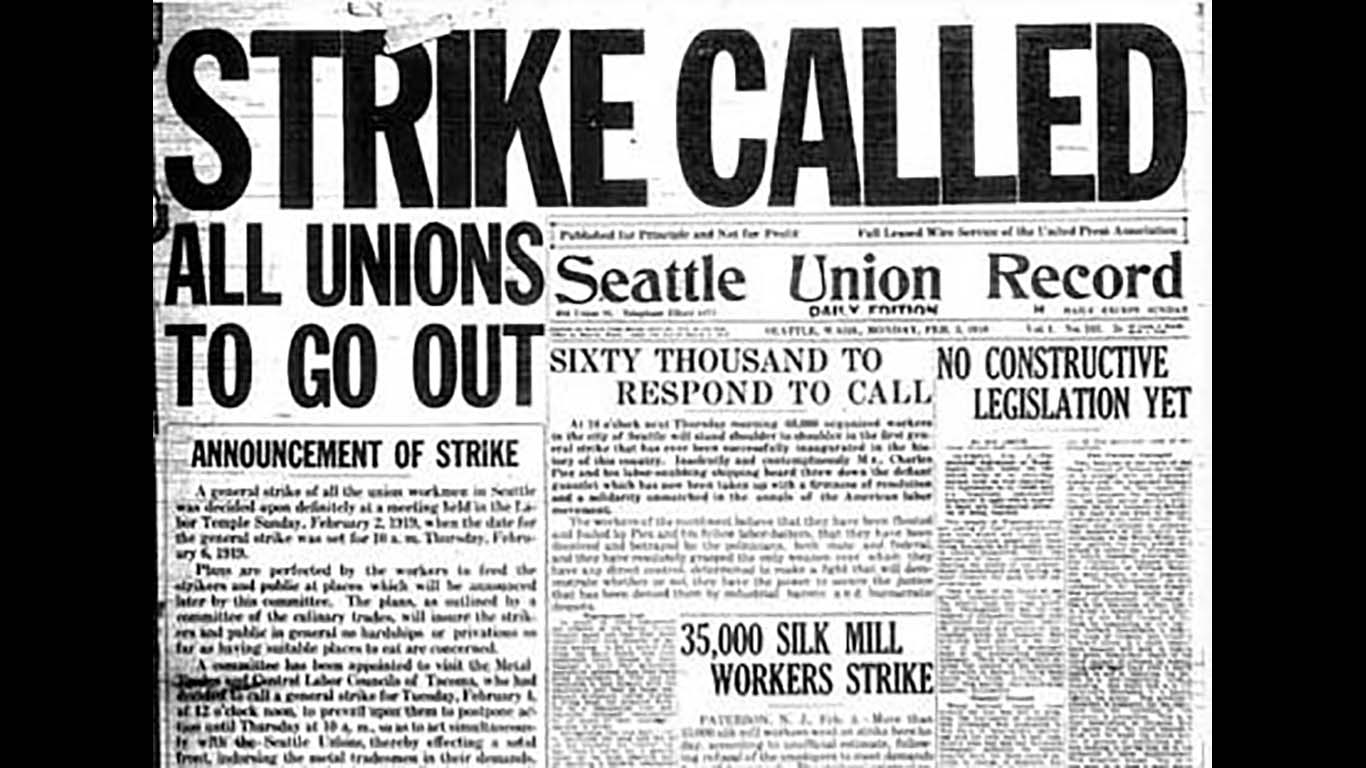
27. Seattle General Strike of 1919
> Duration: Feb. 6, 1919 to Feb. 12, 1919 (5 days)
> No. of strikers: 60,000
> Cumulative days of work: 300,000
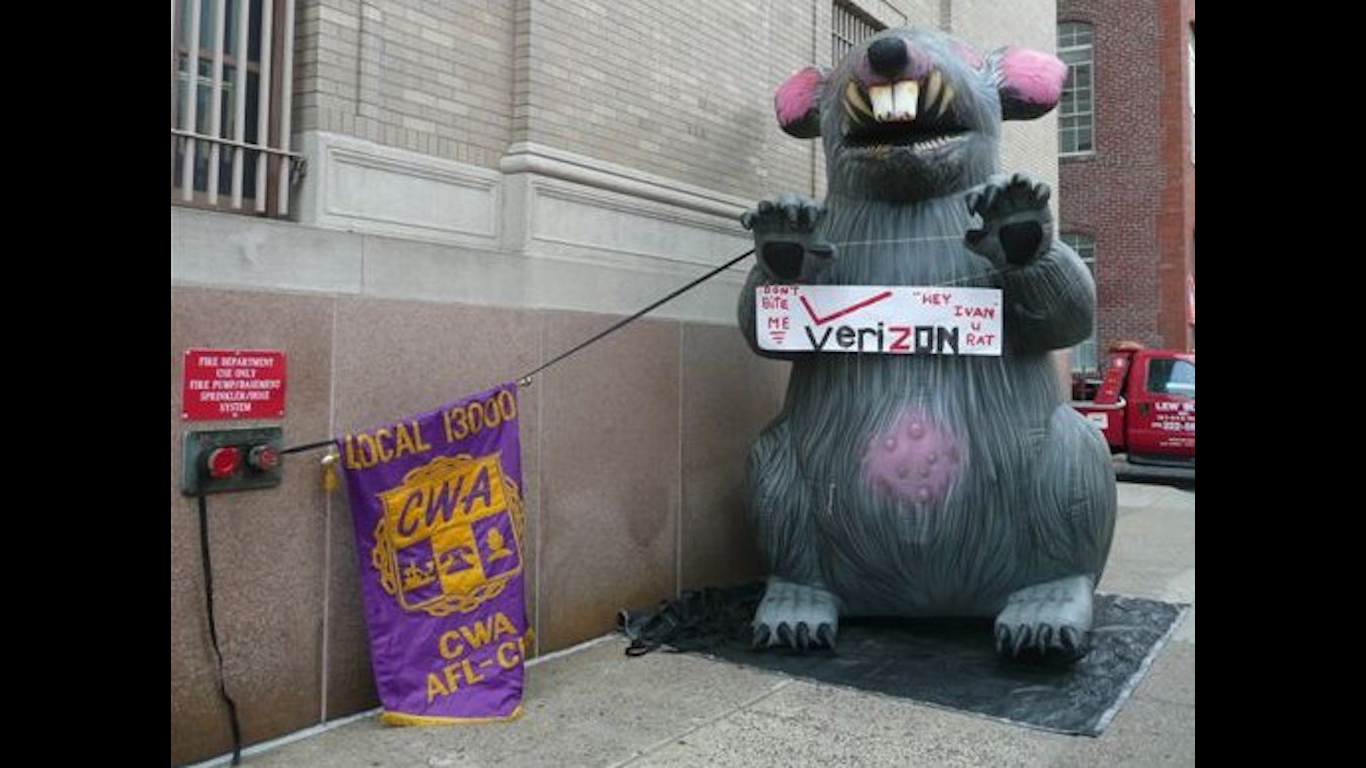
26. Communications Workers of America strike against U S West
> Duration: Aug. 16, 1998 to Aug. 30, 1998 (10 days)
> No. of strikers: 34,000
> Cumulative days of work: 340,000
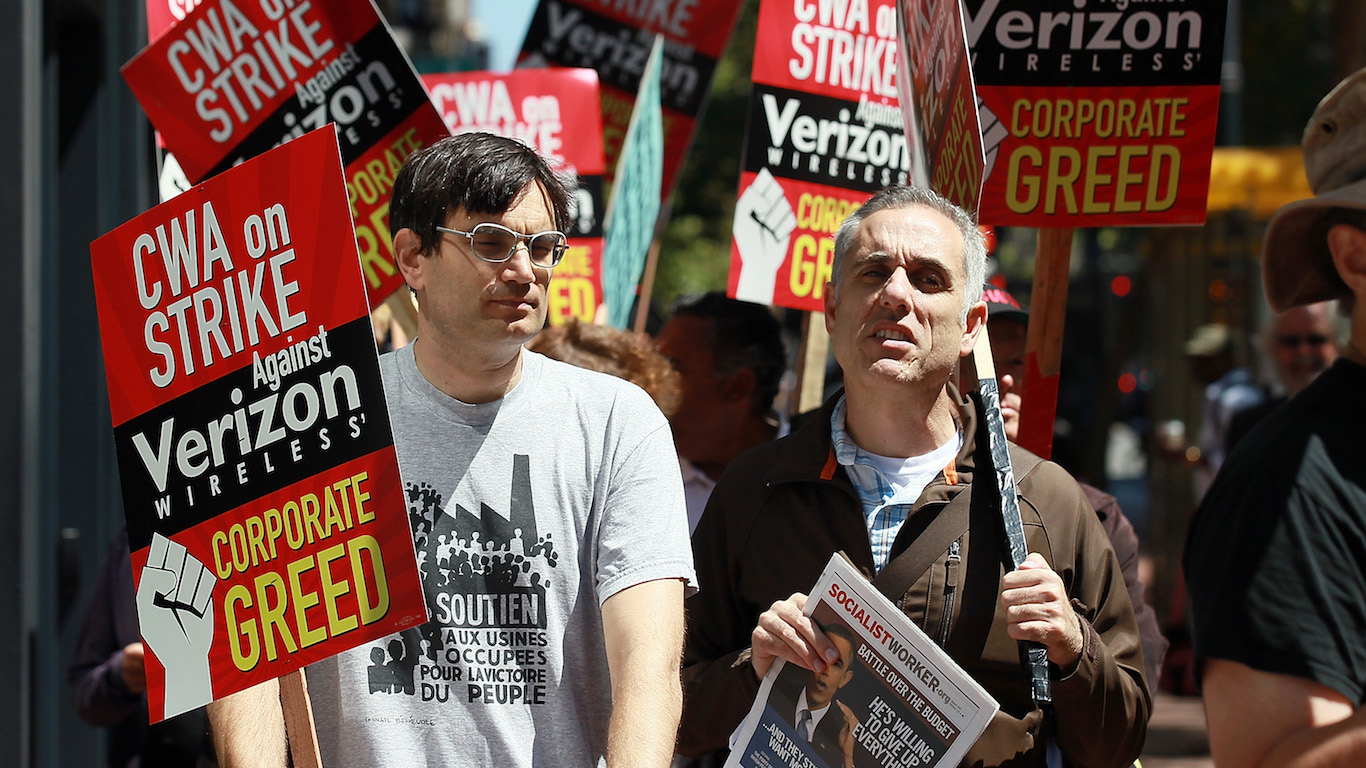
25. Verizon Strike of 2011
> Duration: Aug. 7, 2011 to Aug. 20, 2011 (10 days)
> No. of strikers: 45,000
> Cumulative days of work: 450,000
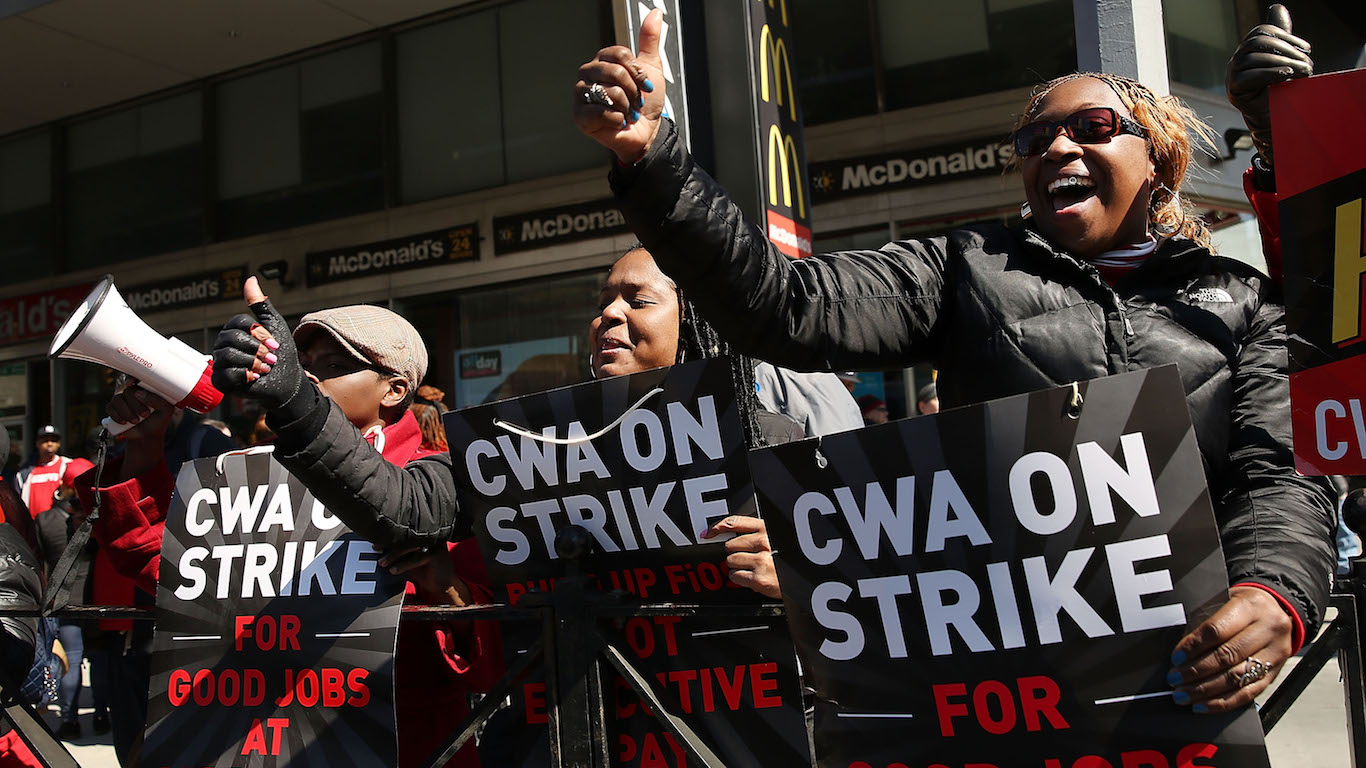
24. Verizon Strike of 2016
> Duration: April 13, 2016 to May 1, 2016 (13 days)
> No. of strikers: 36,500
> Cumulative days of work: 474,500
[in-text-ad]
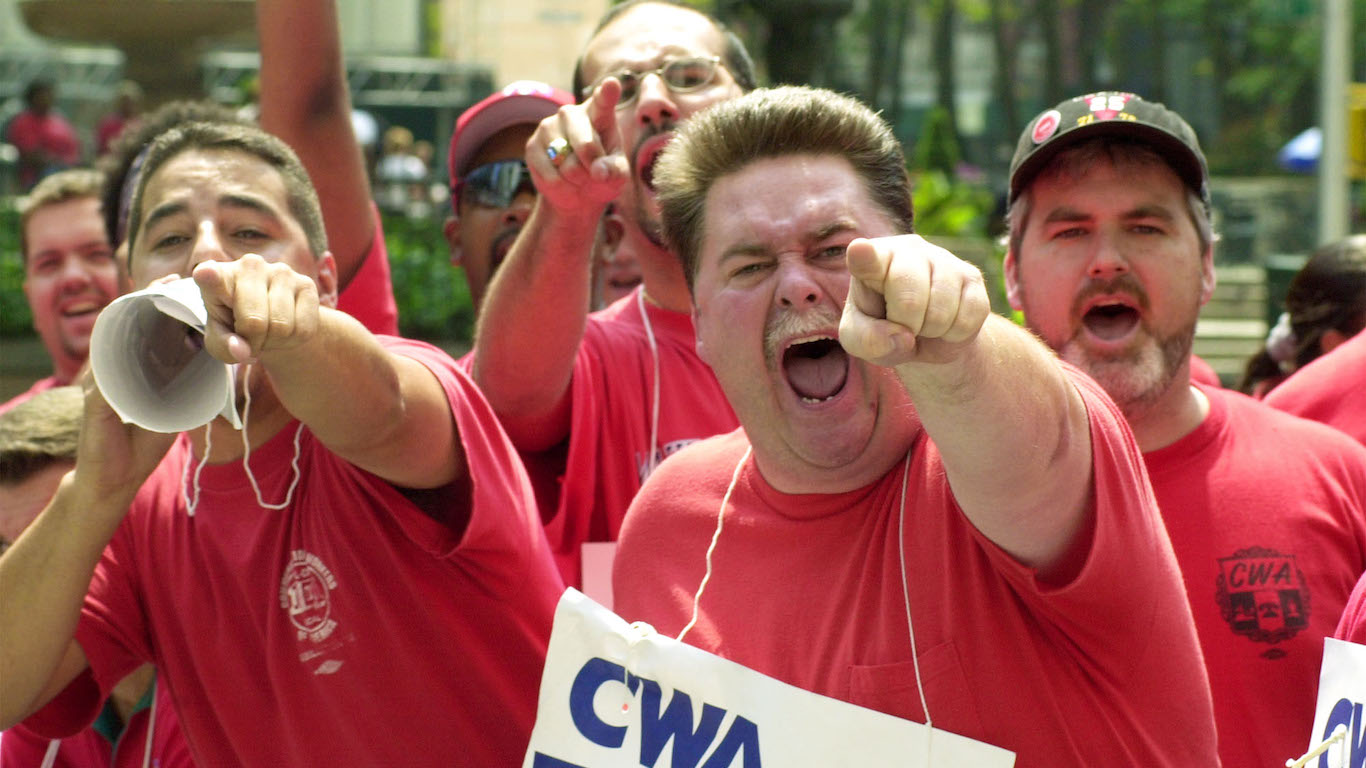
23. Verizon Strike of 2000
> Duration: Aug. 5, 2000 to Aug. 18, 2000 (10 days)
> No. of strikers: 85,000
> Cumulative days of work: 850,000
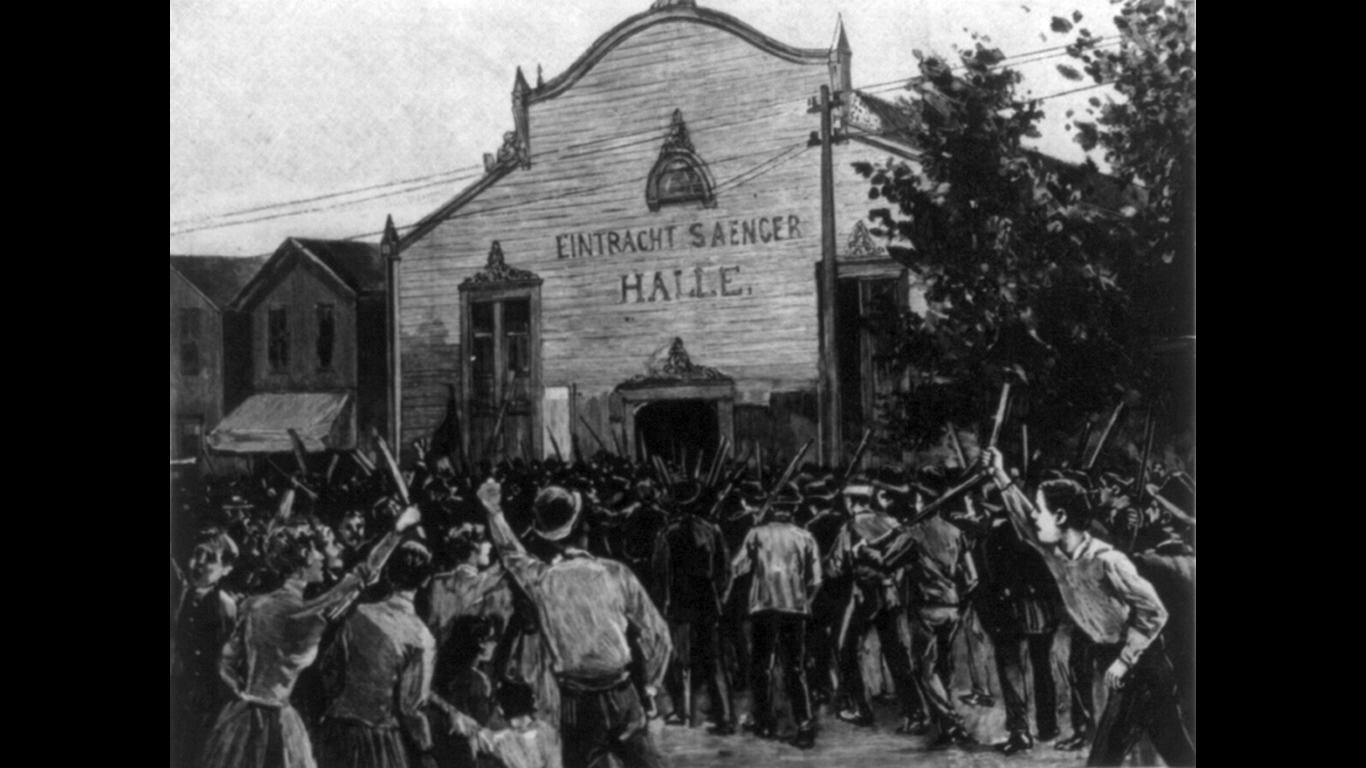
22. Homestead Steel Strike
> Duration: July 2, 1892 to Nov. 20, 1892 (100 days)
> No. of strikers: 10,000
> Cumulative days of work: 1,000,000

21. Boeing Machinists Strike of 2008
> Duration: Sep. 7, 2008 to Nov. 1, 2008 (39 days)
> No. of strikers: 27,000
> Cumulative days of work: 1,053,000

20. International Brotherhood of Teamsters Trucker Strike
> Duration: Aug. 6, 1994 to Aug. 29, 1994 (16 days)
> No. of strikers: 71,000
> Cumulative days of work: 1,136,000
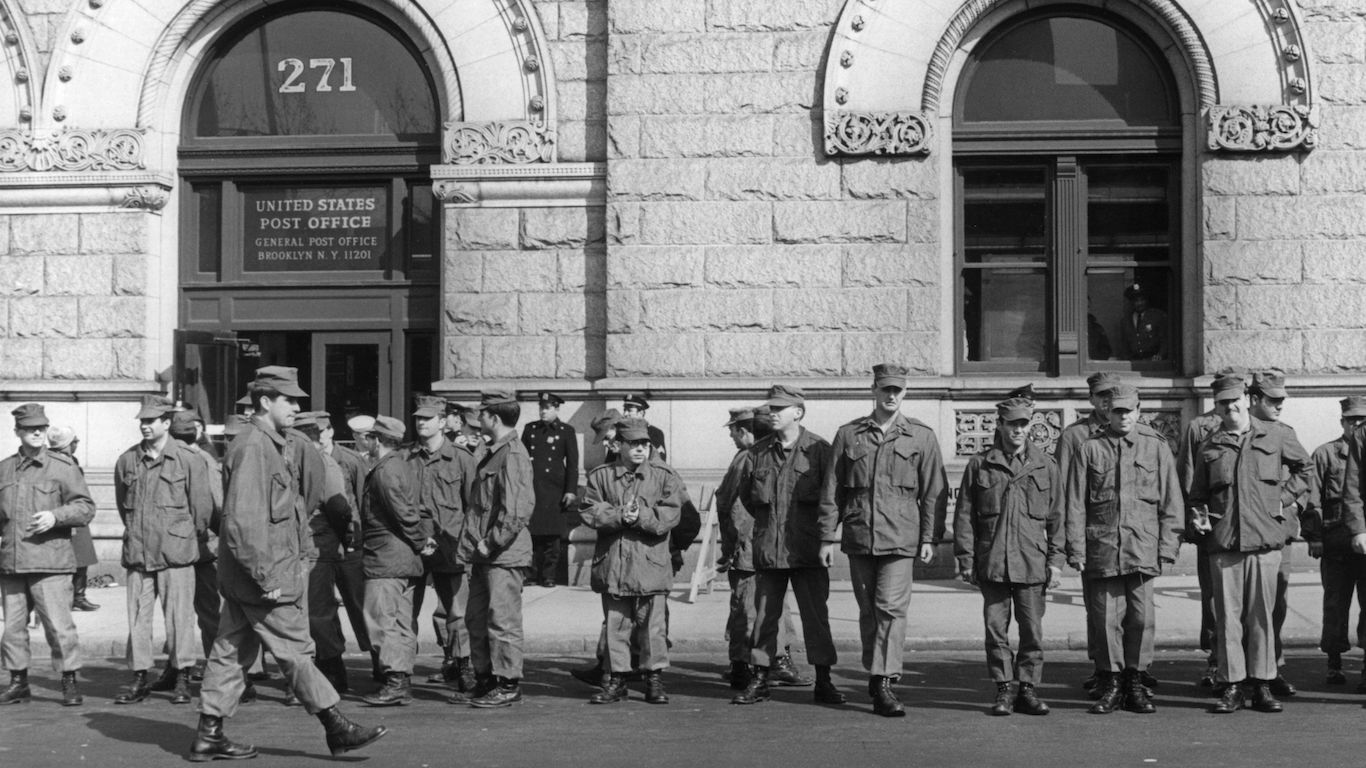
19. The U.S. Postal Strike of 1970
> Duration: March 18, 1970 to March 25, 1970 (6 days)
> No. of strikers: 210,000
> Cumulative days of work: 1,260,000
[in-text-ad]
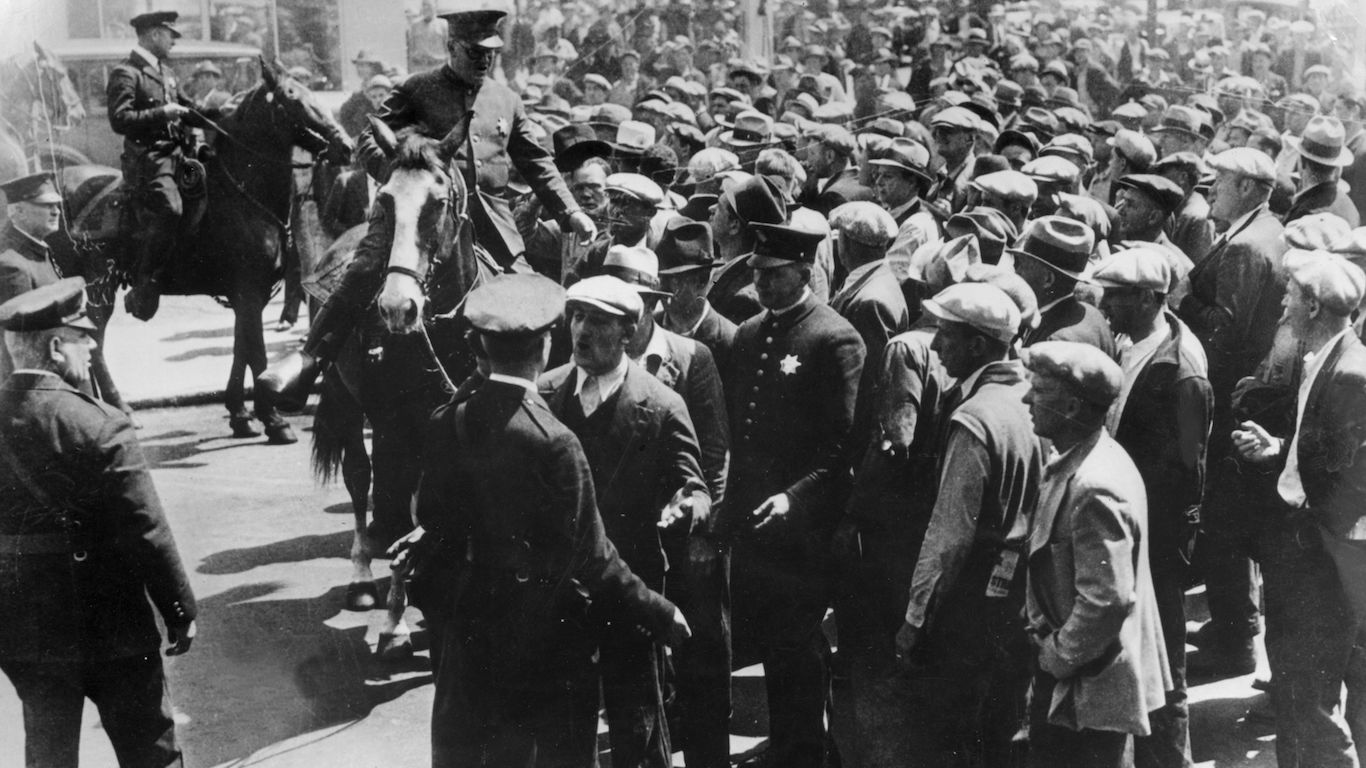
18. 1934 West Coast Waterfront Strike
> Duration: May 9, 1934 to July 17, 1934 (50 days)
> No. of strikers: 35,000
> Cumulative days of work: 1,750,000
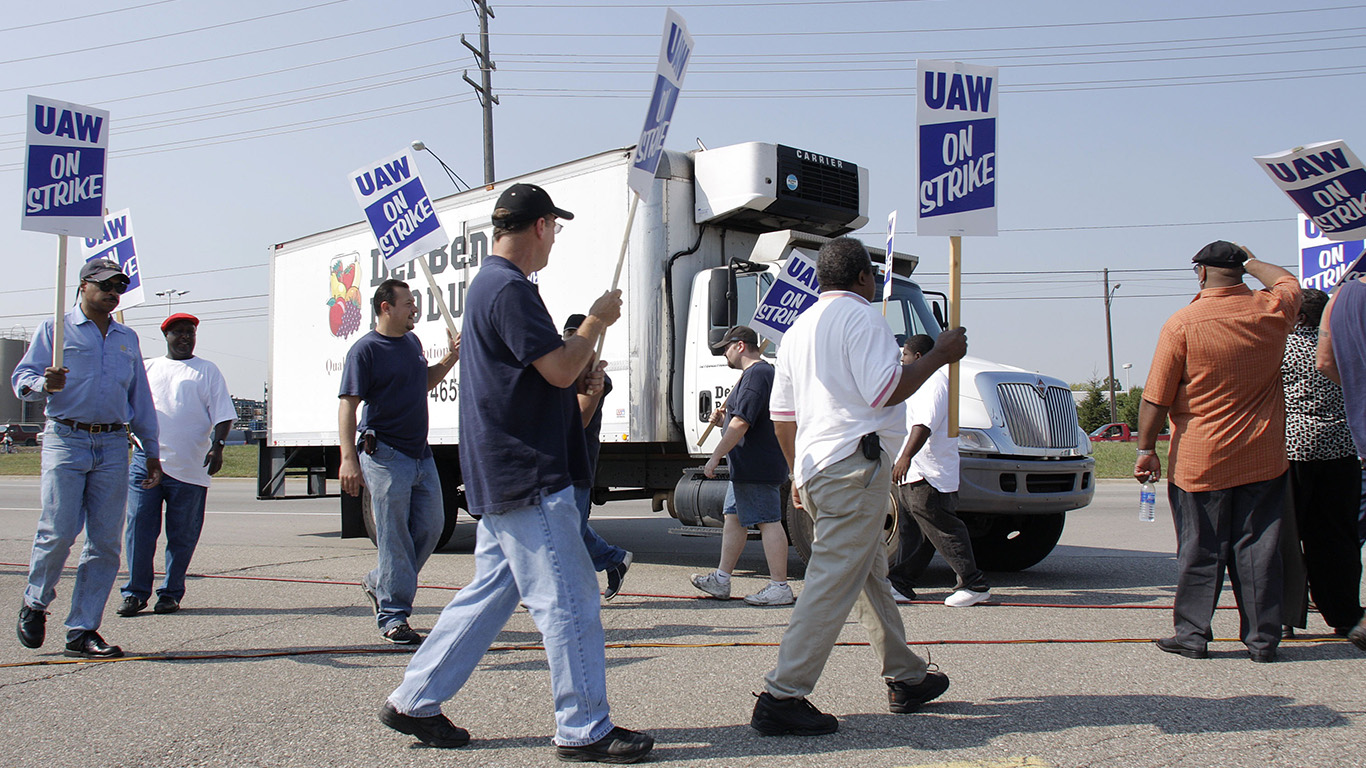
17. United Auto Workers Strike
> Duration: March 5, 1996 to March 22, 1996 (14 days)
> No. of strikers: 136,000
> Cumulative days of work: 1,904,000

16. United Parcel Service Strike of 1997
> Duration: Aug. 4, 1997 to Aug. 19, 1997 (12 days)
> No. of strikers: 185,000
> Cumulative days of work: 2,220,000

15. 1913 Paterson Silk Strike
> Duration: Feb. 25, 1913 to July 28, 1913 (110 days)
> No. of strikers: 23,000
> Cumulative days of work: 2,530,000

14. Passaic Textile Strike
> Duration: Jan. 25, 1926 to March 1, 1927 (281 days)
> No. of strikers: 15,000
> Cumulative days of work: 4,215,000
[in-text-ad]
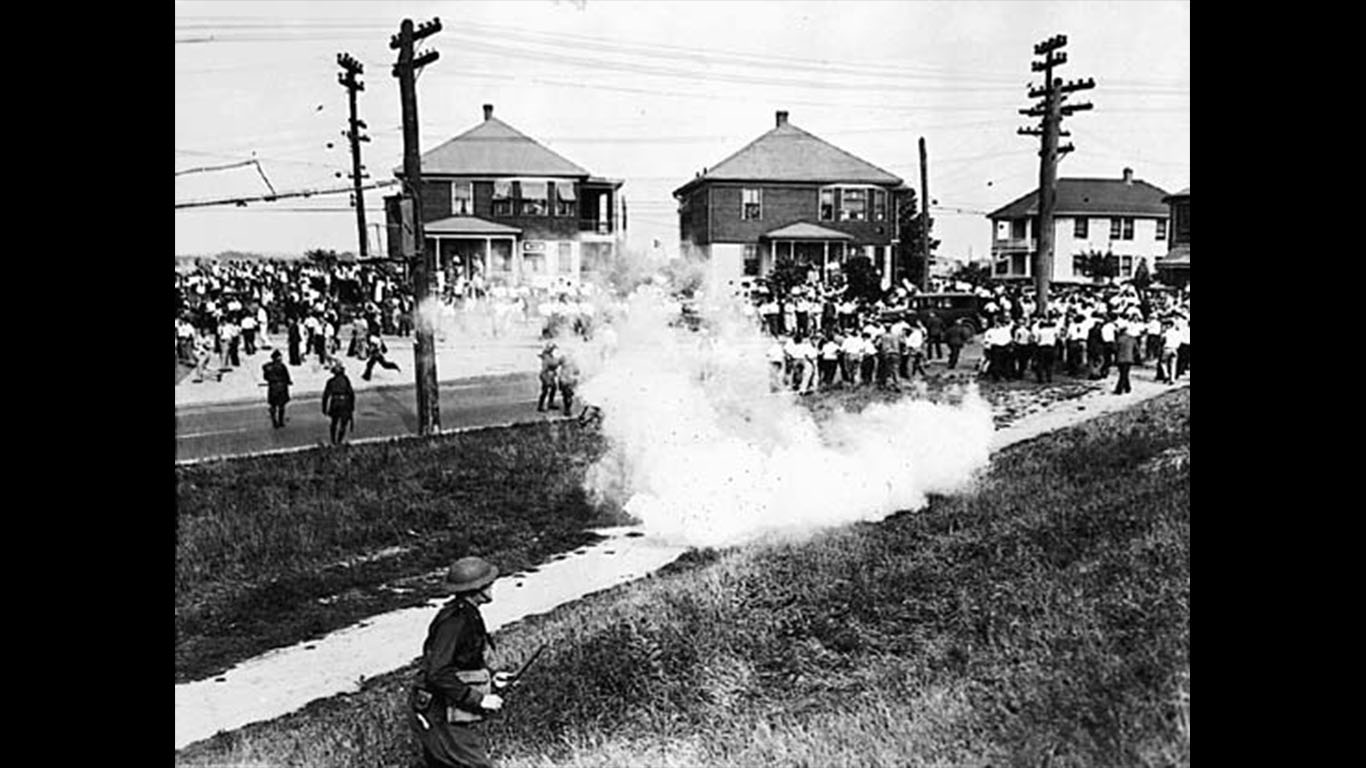
13. The 1934 Textile Worker Strike
> Duration: Sep. 3, 1934 to Sep. 23, 1934 (14 days)
> No. of strikers: 400,000
> Cumulative days of work: 5,600,000
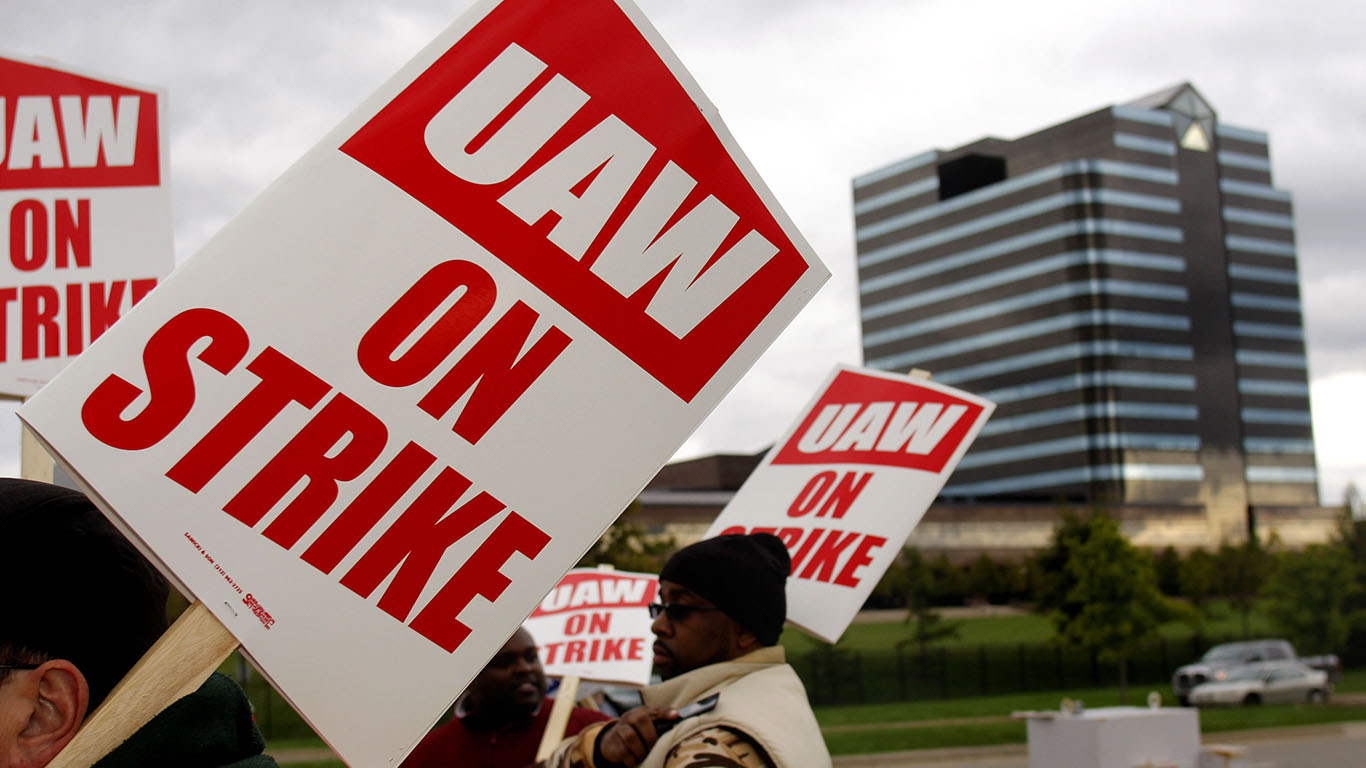
12. 1998 United Auto Workers Strike
> Duration: June 5, 1998 to July 29, 1998 (38 days)
> No. of strikers: 152,200
> Cumulative days of work: 5,783,600
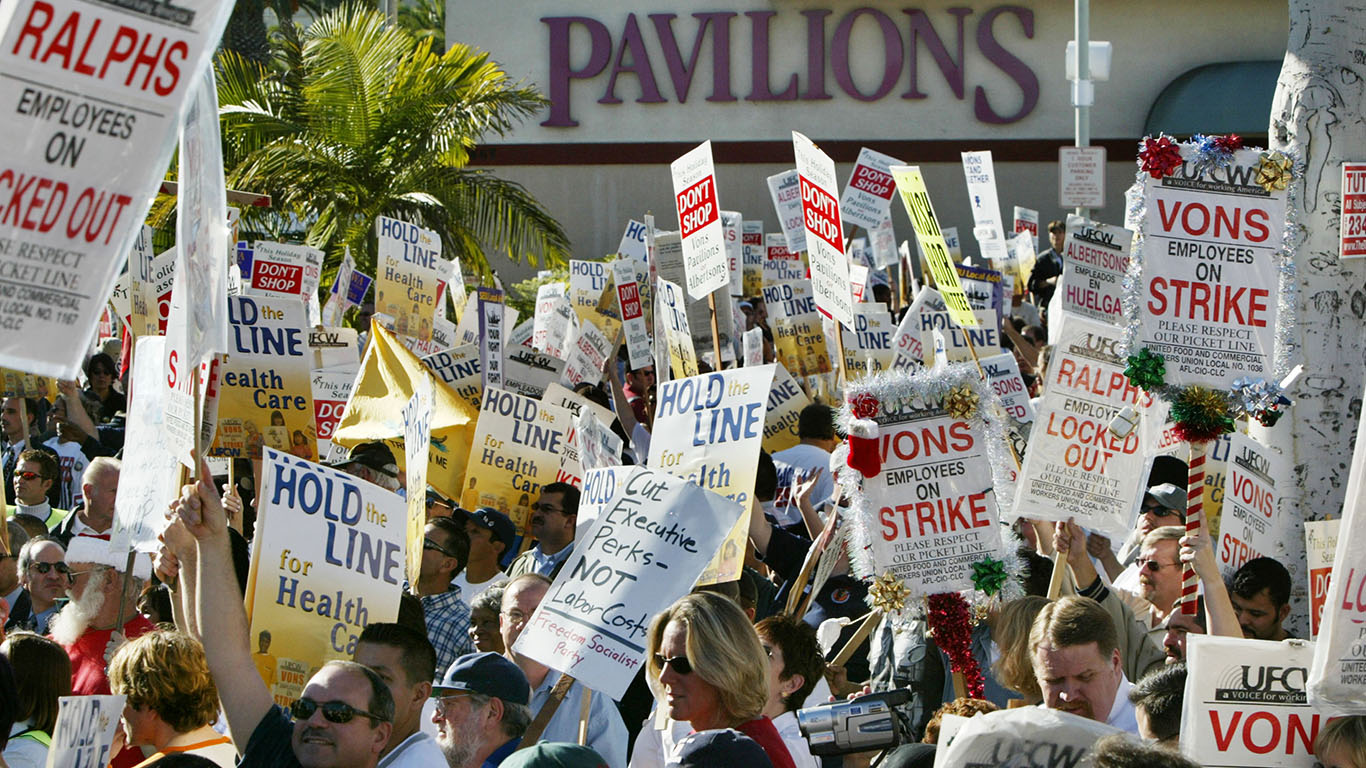
11. Southern California Supermarket Strike of 2003-2004
> Duration: Oct. 12, 2003 to Feb. 29, 2004 (93 days)
> No. of strikers: 67,300
> Cumulative days of work: 6,258,900

10. The 1946 Union of Electrical, Radio and Machinist Workers’ Strike
> Duration: Jan. 15, 1946 to March 14, 1946 (42 days)
> No. of strikers: 174,000
> Cumulative days of work: 7,308,000
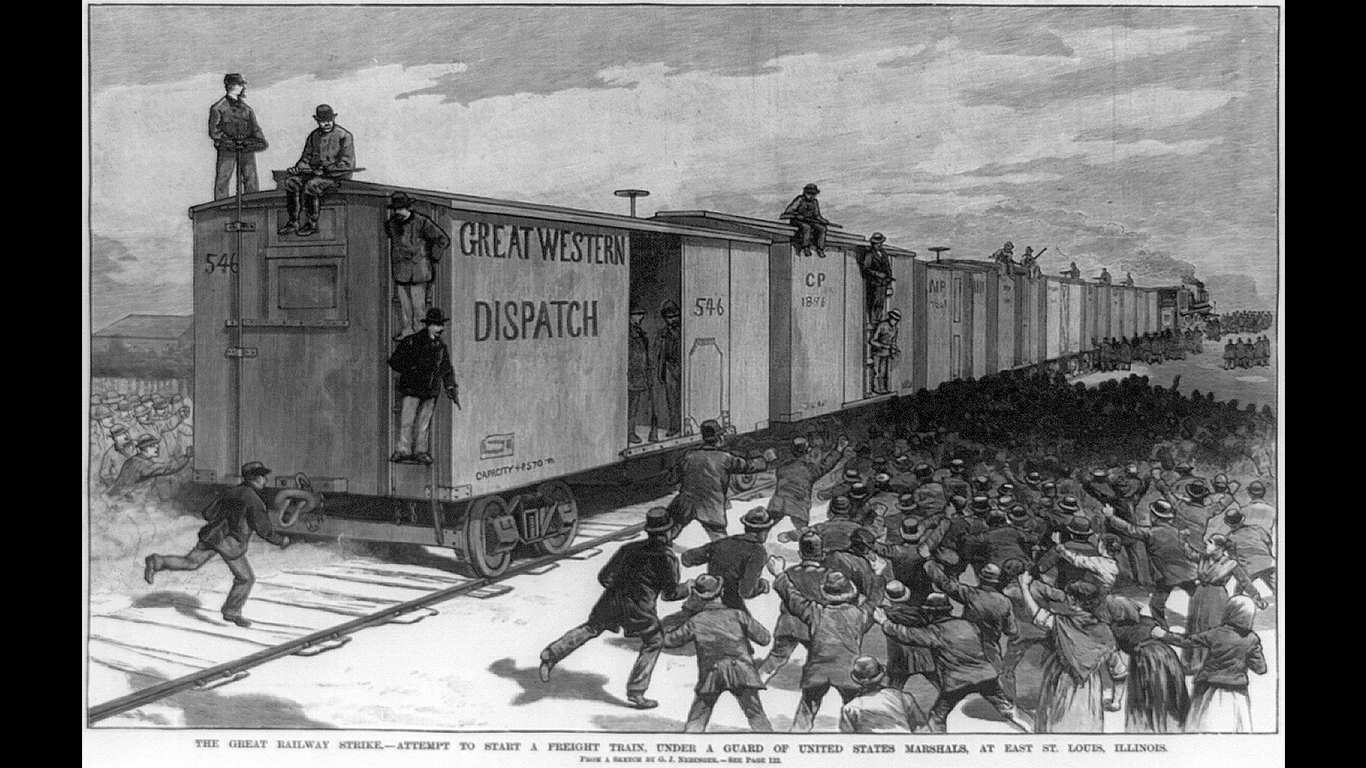
9. The Great Southwest Railroad Strike
> Duration: March 1, 1886 to May 4, 1886 (47 days)
> No. of strikers: 200,000
> Cumulative days of work: 9,400,000
[in-text-ad]

8. Pullman Strike
> Duration: May 11, 1894 to July 20, 1894 (51 days)
> No. of strikers: 260,000
> Cumulative days of work: 13,260,000

7. Anthracite Coal Strike of 1902
> Duration: June 2, 1902 to Oct. 23, 1902 (103 days)
> No. of strikers: 147,000
> Cumulative days of work: 15,141,000

6. American Federation of Television and Radio Artists and Screen Actors Guild Strike
> Duration: May 1, 2000 to Oct. 30, 2000 (127 days)
> No. of strikers: 135,000
> Cumulative days of work: 17,145,000

5. United Auto Workers Strike
> Duration: Nov. 21, 1945 to March 13, 1946 (77 days)
> No. of strikers: 225,500
> Cumulative days of work: 17,363,500
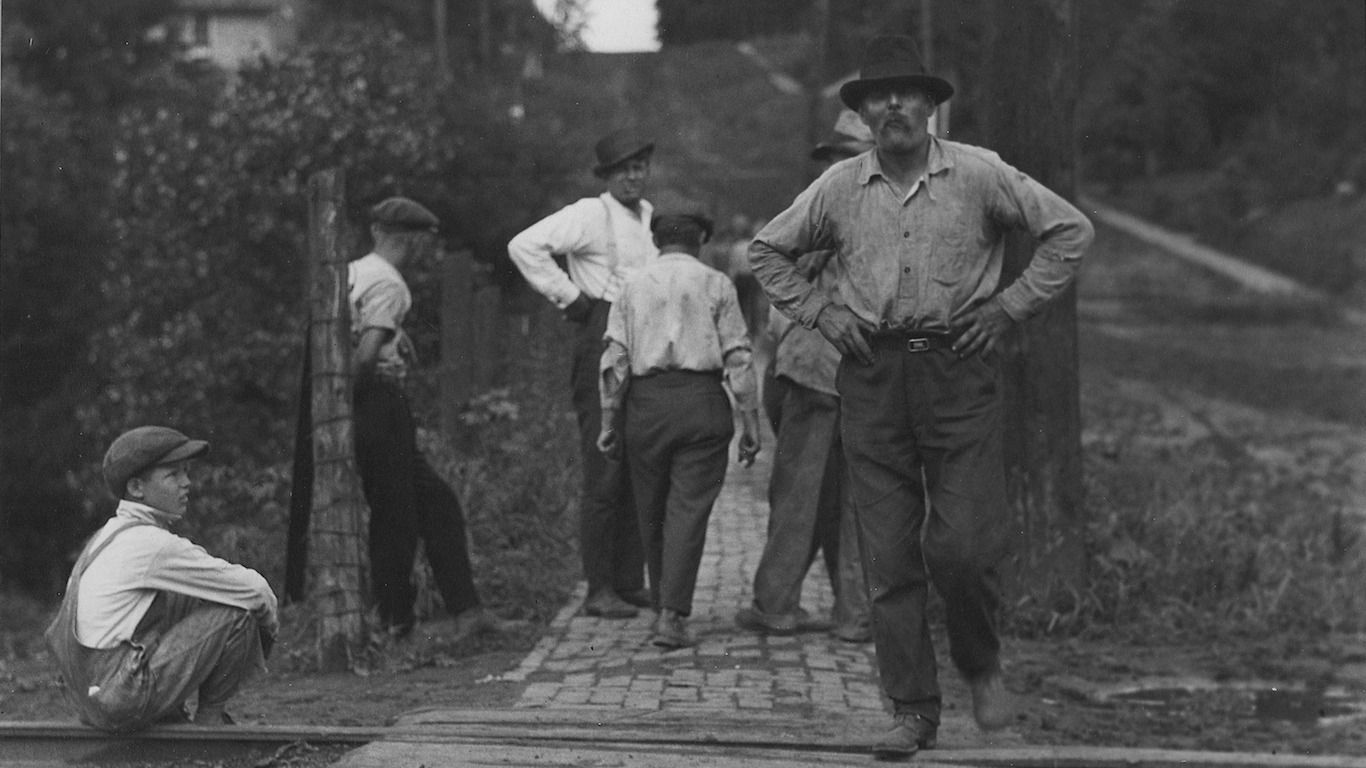
4. The Railroad Shop Workers Strike
> Duration: July 1, 1922 to Sep. 1, 1922 (45 days)
> No. of strikers: 400,000
> Cumulative days of work: 18,000,000
[in-text-ad]

3. The Steel Strike of 1959
> Duration: Sep. 22, 1919 to Jan. 8, 1920 (76 days)
> No. of strikers: 350,000
> Cumulative days of work: 26,600,000
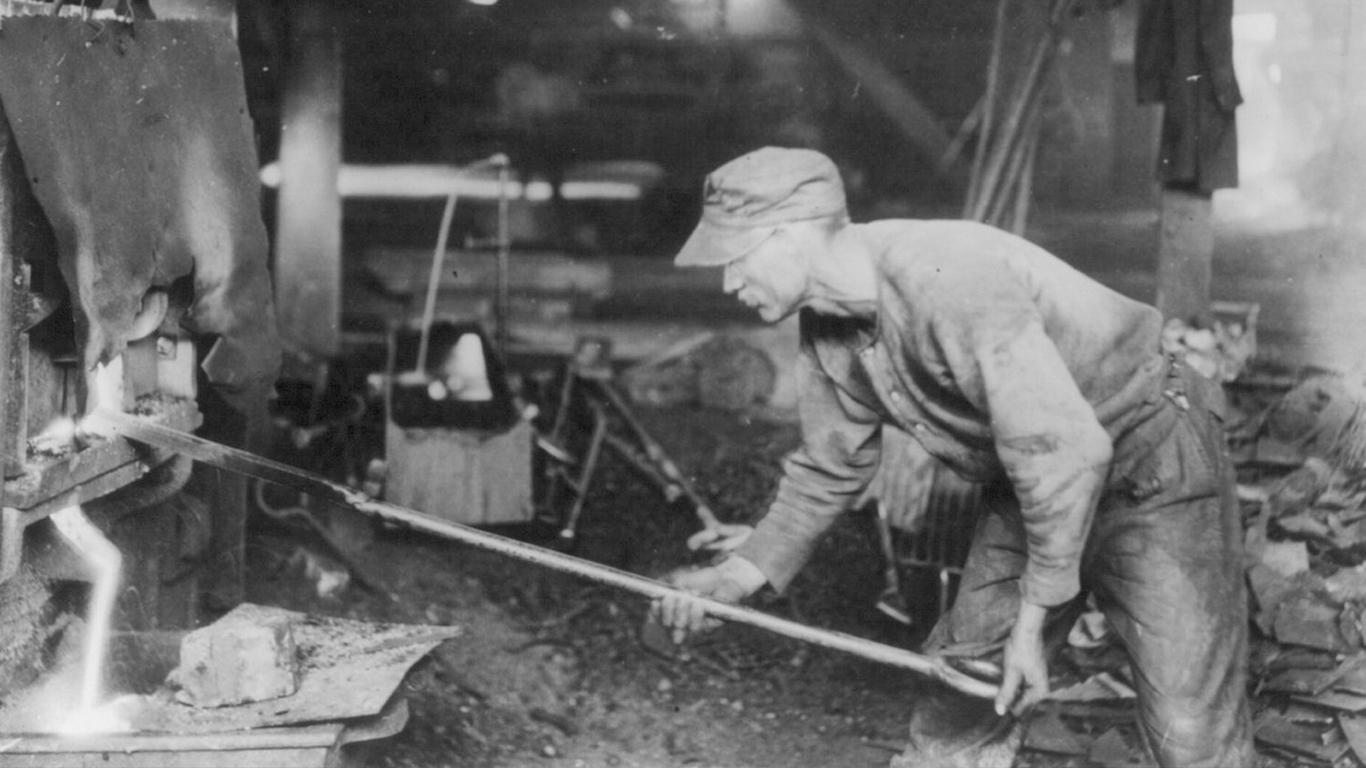
2. The Steel Strike of 1919
> Duration: July 15, 1959 to Nov. 1, 1959 (76 days)
> No. of strikers: 500,000
> Cumulative days of work: 38,000,000
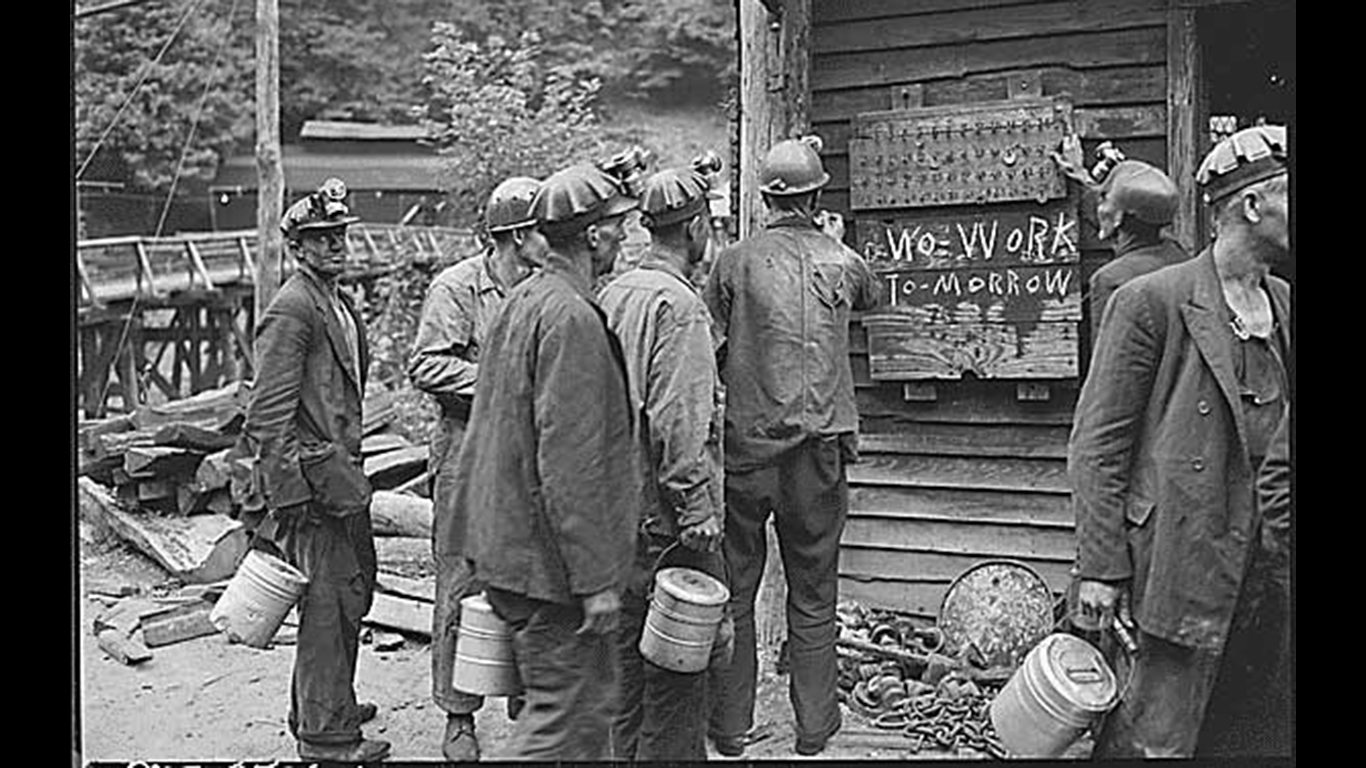
1. United Mine Workers of America Strike of 1946
> Duration: April 1, 1946 to Dec. 7, 1946 (176 days)
> No. of strikers: 400,000
> Cumulative days of work: 70,400,000
After two decades of reviewing financial products I haven’t seen anything like this. Credit card companies are at war, handing out free rewards and benefits to win the best customers.
A good cash back card can be worth thousands of dollars a year in free money, not to mention other perks like travel, insurance, and access to fancy lounges.
Our top pick today pays up to 5% cash back, a $200 bonus on top, and $0 annual fee. Click here to apply before they stop offering rewards this generous.
Flywheel Publishing has partnered with CardRatings for our coverage of credit card products. Flywheel Publishing and CardRatings may receive a commission from card issuers.
Thank you for reading! Have some feedback for us?
Contact the 24/7 Wall St. editorial team.